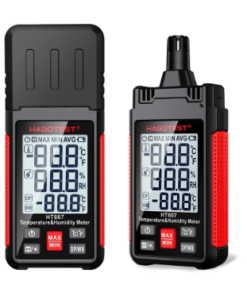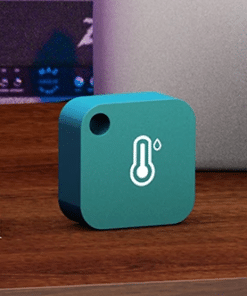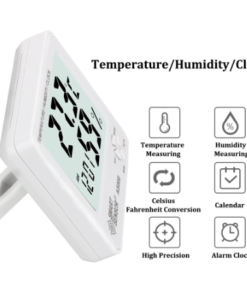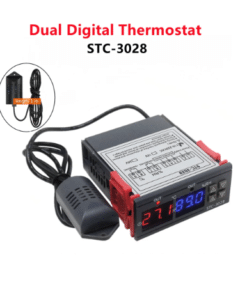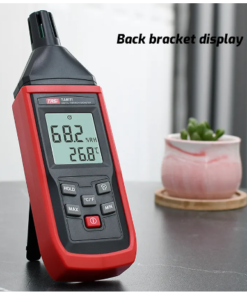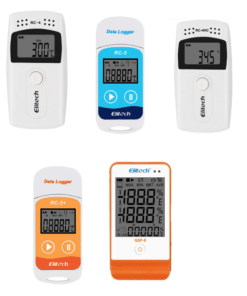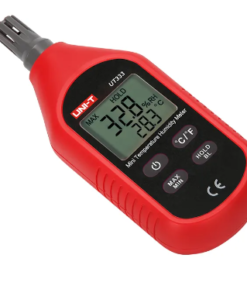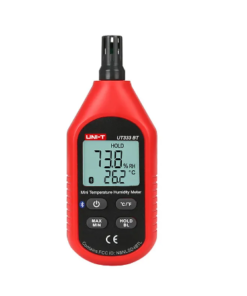Temperature and Humidity Meter (Thermo-Hygrometer)
A temperature and humidity meter, often referred to as a thermo-hygrometer, is a device used to measure both the temperature and humidity of the surrounding environment. It’s a common tool used in various settings, including homes, offices, laboratories, and greenhouses.
How it works:
- Temperature Measurement: This is typically done using a temperature sensor, such as a thermistor or thermocouple. These sensors change their electrical resistance or voltage output based on temperature changes.
- Humidity Measurement: Humidity is measured using a hygrometer, which can be of various types, including:
- Resistive Hygrometer: Measures changes in electrical resistance of a hygroscopic material as it absorbs moisture.
- Capacitive Hygrometer: Measures changes in capacitance of a sensor as it absorbs moisture.
- Dew Point Hygrometer: Determines the dew point temperature, which is related to relative humidity.
Applications:
- Home and Office: Monitoring indoor climate for comfort and health.
- Agriculture and Horticulture: Monitoring greenhouse conditions for optimal plant growth.
- Industrial Settings: Monitoring storage conditions for sensitive equipment and materials.
- Meteorology: Measuring atmospheric conditions for weather forecasting.
Key Features:
- Accuracy: Precise measurement of temperature and humidity.
- Range: Ability to measure a wide range of temperature and humidity values.
- Response Time: Quick response to changes in environmental conditions.
- Display: Clear and easy-to-read display, often digital.
- Data Logging: Some models can record data over time for analysis.
- Alarm Function: Can be set to alert users when conditions exceed specified limits.
By using a temperature and humidity meter, individuals and businesses can maintain optimal environmental conditions, improve product quality, and enhance comfort and well-being.
Temperature Humidity Meter Thermometer
Agriculture Tester
Temperature Humidity Meter Thermometer
Temperature Humidity Meter Thermometer
S09-24H Tuya Smart WiFi Universal IR Remote Temperature Humidity Sensor
Temperature Humidity Meter Thermometer
SMART SENSOR AR807/AS808/AR867/AS807 Temperature-Humidity Clock
Temperature Humidity Meter Thermometer
Temperature Humidity Meter Thermometer
Temperature Humidity Meter Thermometer
Temperature Humidity Meter Thermometer
Temperature Humidity Meter Thermometer
Temperature Humidity Meter Thermometer
Temperature Humidity Meter Thermometer
UNI-T UT333BT Bluetooth Digital Air Temperature Humidity Meter

